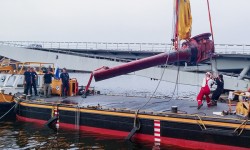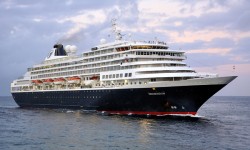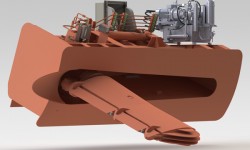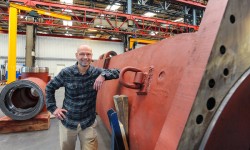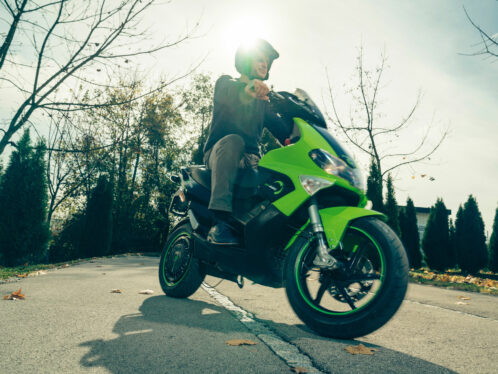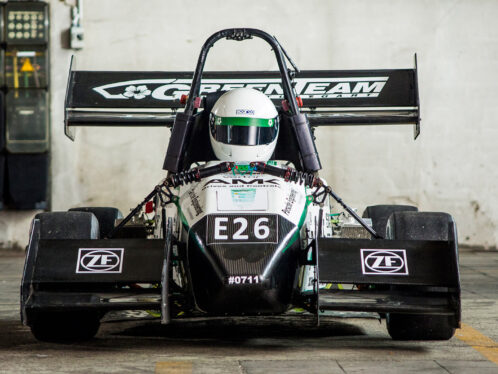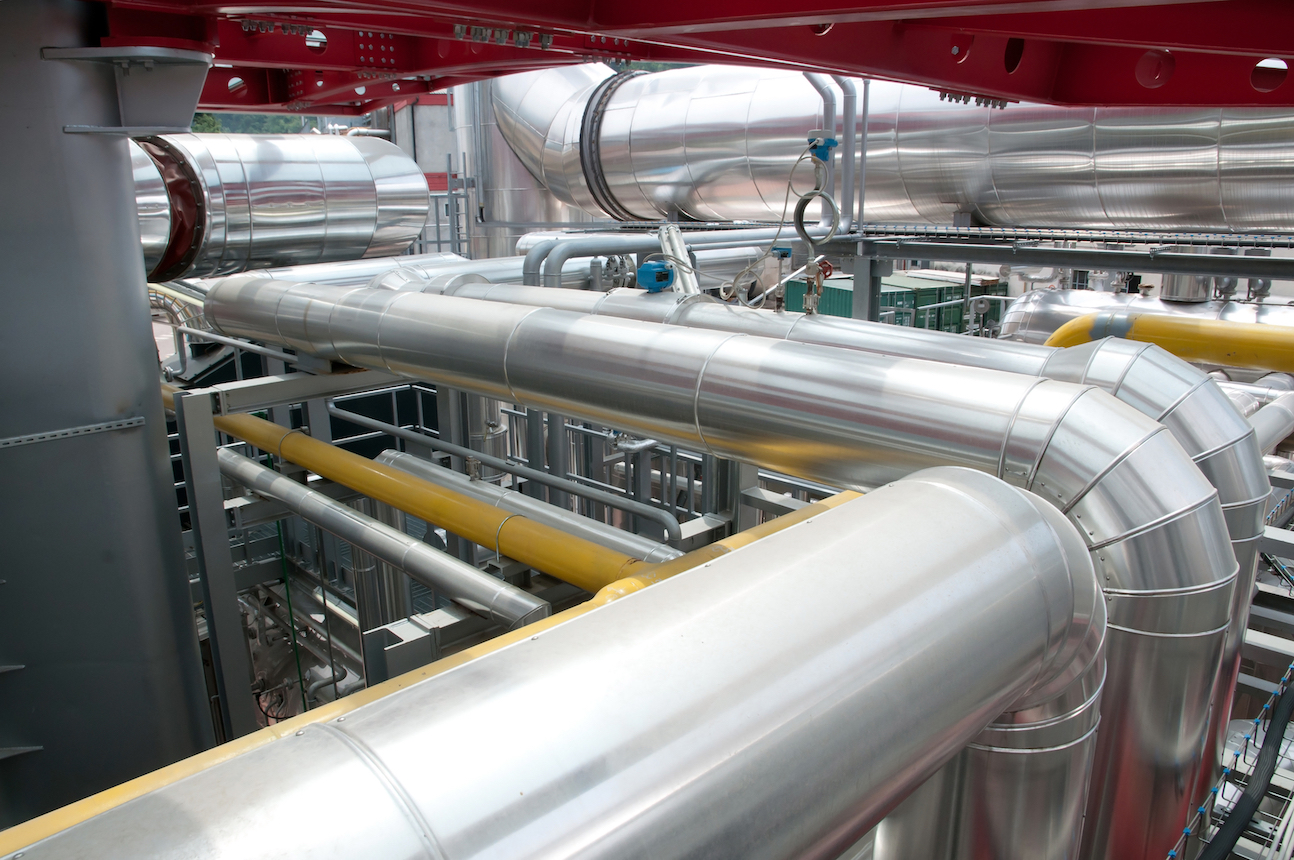
Taking the plunge
SKF Blohm + Voss Industries has achieved a daring world first – removing a ship’s fin stabilizer while the vessel was still in the water.
When rough waters hit a cruise ship, the vessel stays surprisingly level. Its secret is stabilizers, relatively small movable fins attached to the hull below the water line. These small components have a huge effect on ship performance; they are capable of reducing roll by more than 85 percent. Shaped like aeroplane wings, these fins are deployed from the side of the hull and pivot up or down to exert dive or lift, thereby counteracting the waves’ effect on the ship. SKF Blohm + Voss Industries (SKF BVI), part of the SKF Group, has more than 60 years of experience in developing and producing retractable fin stabilizers, and it has supplied nearly 600 pairs of them all over the world. The company also performs maintenance and repairs on its products. When the MS Prinsendam’s starboard stabilizer was damaged by a collision in the midst of high season, cruise company Holland America Line contacted SKF BVI to repair it. Normally, a ship would have to go to a dry dock for such repairs, where the stabilizer and crux could be removed more easily. But cruise ships schedule their dry dock periods a couple of years in advance, and with cruises ongoing, the company was desperate to find a different solution. Could the stabilizer be quickly removed while Prinsendam was docked in a port – during a cruise – instead? Such an underwater extraction had never been performed before. And when it comes to cruise ships, components that are “relatively small” are still huge. The stabilizer fin and crux that needed to be removed weighed about 25 tonnes. Holland America Line asked underwater repair specialists Subsea Global Solutions to help develop a solution. Under the supervision of SKF BVI technical consultant Jens Miesner, the companies put their heads together. Subsea’s Rick Shilling says, “We designed a detailed rigging procedure based on the stabilizer design, using fixed as well as buoyant rigging sufficient to manage the load. The process was consistent with what they do in dry dock. We just adapted and modified it so it can be done by divers underwater.” This meant that metal rings called “pad eyes” needed to be fixed onto the ship to support the rigging during extraction. Several port visits beforehand, divers were sent down to weld the pad eyes onto the ship. “It was extremely difficult,” Miesner says. “The pad eyes in the fin box were not welded, as we normally need them to be. Another problem was the very narrow space we would have to manoeuvre the 25-tonne unit.” Subsea Global Solutions’ coded welder/divers used an industry-leading procedure approved by class to perform the underwater wet welding. Innovative solutions were employed, such as pad eyes designed to fold like a hinge, which helped to ensure that they didn’t clash against the fin box. Divers at these ports also removed bolts from the stabilizer to make sure it was as ready as possible for extraction when Prinsendam arrived in Amsterdam. (The extraction was originally scheduled for an earlier port, Warnemünde in Germany, but the extraction was postponed due to operational delays.) Of course, removing a hull component presents an obvious problem: how to keep water from getting inside the vessel. From the inboard side of the hull, the crux mating surfaces were blanked off with a specially built internal cofferdam. For the exterior, the diving company had prepared covers for the two holes, with special sealing strips that would take advantage of the 7.8 tonnes of water pressure to seal them up. “Basically, you’re opening a hole in the vessel, and the challenge is to keep water from getting in and oil from getting out,” Shilling says. “Part of the process involved balancing pressures in the systems and flushing fluids out of the unit. For any residual fluids that can’t be pumped into the vessel we have systems that can encapsulate them underwater and pump them to the surface.” The team conducted a risk analysis to submit to the necessary authorities for approval. “We are a known entity in the industry,” Shilling says, “and we prepare the necessary repair plans, risk assessments and contingency plans, so approvals from ports and other authorities were not hard to get.” Once the ship arrived in Amsterdam, additional dive teams were on site to execute the extraction. “Our biggest concern was with internal release of the crux assembly,” says Shilling. “With any component damage like this, there are some unknowns, and while the stabilizer was fully inspected after the initial damage had occurred, you don’t see everything. All the contingencies were in place, and if worse came to worst, we could just put the bolts back in and try again some other time.” Fortunately, weather and sea state conditions were favourable, so the extraction went ahead. All the detailed preparation paid off: The divers applied the rigging solutions to the stabilizer, using heavy chains to tie the equipment to a floating pontoon. They removed the remaining bolts and used specialized rigging techniques and buoyancy control to carefully manoeuvre the stabilizer to a location where a crane could lift it from the water. In the end, the extraction process in port took about 55 hours. Miesner says, “A lot of shipping companies observed the process because it means that a lot of time can be saved.” The stabilizer was sent to SKF BVI for overhaul and was reinstalled on Prinsendam a few months later to continue sailing steady on the seas. 1. Several days before the ship arrived at Amsterdam, the “extraction port”, an onboard team consisting of SKF BVI and SubSea Global Solutions experts prepared the vessel from the inside. A specially built cofferdam sealed off the stabilizer/hull connection points from the rest of the interior. 2. At the same time, the team followed the vessel at different ports to do preparatory work on the exterior and interior of the hull. Divers welded innovative hinged pad eyes to be used as rigging connections to the hull. As many bolts as possible were removed from the stabilizer and joint attachments to save time later, during extraction. 3. In the final port, additional dive teams were on site to execute the extraction. Using heavy chains, divers lashed the stabilizer fin to a floating pontoon. 4. Divers removed the remaining bolts, and the team extracted the equipment using advanced rigging (based on the stabilizer design) and buoyancy control. 5. The stabilizer and crux were manoeuvred to a location in the port where a crane could lift the equipment from the water. How the stabilizer was removed


